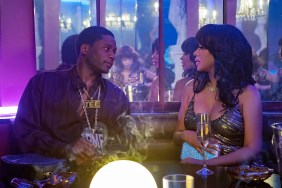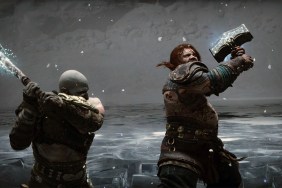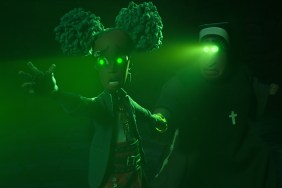“Oysters”, get it?, ’cause it’s an ocean.
Once upon a time, there was a little dev team that could. This particular dev team was destined to take all the boring spreadsheet combat that had been plaguing the JRPG genre and replace it with frantic, face-paced button-mashing. This was a very ambitious task, considering this was back in the SNES days.
[image1]They started this enterprising venture with Tales of Phantasia, a quirky game full of charm and lousy voice-acting. But like bukakke and used panty vending machines, this too never caught on in the States, until recently, when America decided Japanese pop culture was "super number one best cool" and that animé and sushi should replace baseball and apple pie in American culture.
This dev team also started a little franchise called Star Ocean. The first game was an SNES title that, like most JRPGs, didn’t come out in the U.S. until recently. The second game in the series, the aptly named Star Ocean: The Second Story, however, did come out for the PS1 and was met with great success for its fast-paced combat and unique storytelling.
Well, 10 years or so have passed, and we now have Star Ocean: Second Evolution as part of Square Enix’s concerted effort to milk re-issue their entire back catalogue in handheld format. The overall story is your average "save the world" fare that’s oh-so-common in JRPGs. But where the game truly shines is in the amount of choices you get. At the start, you choose to play as either Claude or Rena (the male and female lead, respectively). From there, you encounter other playable characters you can recruit or ignore, each with their own unique story, stats, and special moves. The characters are unique as well, which was (and still is) a giant leap for a genre that practically prides itself on stock characters and cheesy plots.
The graphics are typical for the period, using sprites instead of today’s standard fully-rendered 3D space marines. The environments are, past or present, some of the best I’ve seen in any game, the only exception being the battle maps. They’re not terrible, but they’re nothing to write home about.
[image2]You build relationships with your team, which will ultimately determine which of the 80+ endings you’ll get. The only downside to this is that the situations where you build relationships happen with little warning. When they do happen, you’re presented with a choice of responses that all seem harmless enough, but in some cases your character will interpret one of your responses by saying something terrible. Like if the question was “Does this hat look nice?” and you respond “Yes, it does”, your character might follow it up with “Yes it does, but your face is ugly.” This isn’t a direct quote from the game obviously, but it’s close enough and is really frustrating when you’re trying to make nice with someone and the seemingly flattering comment you choose turns into an insult.
Like all ports (and most PSP games in general), Second Evolution is wrought with flaws. Most of the new additions are lame. There are animated cut-scenes but not very many. Most of the names have been respelled (to look cooler, I suppose) but are still pronounced the way they were spelled in the first place, like replacing the town name "Cross" with "Krosse" but still pronouncing it "Cross". This is really just a nit-picky thing, but it’s just unnecessary, and it brings me to my next point: the voice-acting.
The original Star Ocean 2 did have voice-acting, but it was only during combat and it sounded like it was recorded through a telephone. Second Evolution, on the other hand, has a ridiculous amount of voice-acting. Let me rephrase that: a ridiculous amount of bad voice-acting, and even for scenes that are totally irrelevant (why did they bother voicing all the shopkeepers?).
So the new bits are less than great, that’s fine; but that’s not to say that the original material is a shining jewel of perfection. As with most JRPGs, Star Ocean 2 is up to its oysters in lengthy exposition reiterating plot points that are obvious, and some of those go on for chuffing ages. In one conversation with the text set to auto (which is the default setting), this dross went on for so long, the screen went to sleep! This kind of heavy-handed storytelling is par for the course for the PS1 days, but awkward and forced by today’s standards.
[image3]But Second Evolution shouldn’t be judged by today’s standards of quality, but by that same right, it may in fact be too anachronistic for its own good. Cut-scenes with enough dialogue to fill a modest paperback are fine for consoles [Please don’t give Hideo Kojima an excuse… please… ~Ed. Nick Tan]; but handheld games are best in short bursts. 20-minute stints of fully-voiced cut-scenes make gaming on the go slow and frustrating.
I realize that everything nice I’ve said has been rebutted with a glaring flaw, but this is a really great game. If you missed it on the PS1 and you like classic RPGs, then you really owe it to yourself to play this, though you may want to turn the sound off to avoid the bad voice-acting.
-
Beautiful environments
-
Choices beyond good or bad
-
Great characters
-
Choice!!! (Take <i>that</i>, modern RPGs!)
-
Awful and over-used voice-acting
-
No way to track relationships
-
Innocent comments turning into insults










